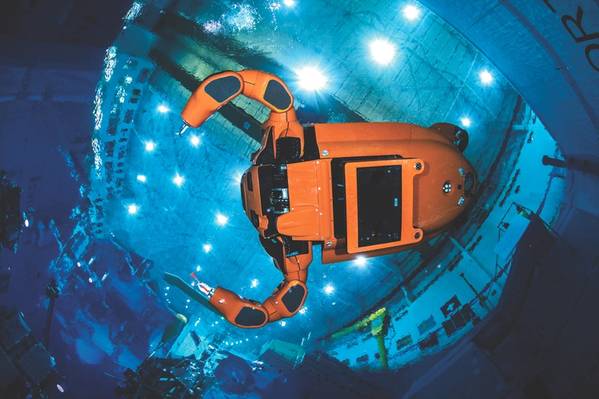
Sean Halpin, Director, Product Management and Marketing, at relatively new entrant Houston Mechatronics, says that cost is driving a willingness to innovate. “Financial efficiency is a significant priority for the world’s oil companies in this market – so they are starting to open the door for transformational technology,” he says. Meanwhile, growth in and access to computing power is helping drive technology. “Most, if not all, of the latest ocean robots have a ton of edge computing in them. That just wasn't possible 10 years ago,” he says. “Aquanaut has dedicated computational resources just for processing machine vision data. We are implementing deep learning algorithms on the edge and are loading a ton of computational power onto the machine to enable greater autonomy,” so that it no longer needs a support vessel and can operate even when there’s latency in communication.
Set up in 2014, Houston Mechatronics has been busy, moving from its lab in Houston to trials at the Neutral Buoyancy Lab (NBL, NASA) and now to trials in a lake in Texas. At the NBL, core vehicle functionality was tested, including automated manipulation. The field trials this year are in 60 meters water depth, with a fiber optic tether. The next tranche of testing will include untethered operations, says Halpin. “We will be testing common AUV mission constructs (survey, etc.) and more trials are planned for this fall and winter where we will demonstrate Aquanaut's ability to automatically detect and manipulate objects.”
The current trial Aquanaut is rated to 300 meters water depth but the first full commercial system will be designed for up to 3,000 meters water depth, says Halpin, and could include inductive charging, so it could be a resident system. Working in ROV mode, its power capacity is expected to last a day (using all imaging systems, arms, and its seven thrusters). In AUV mode the vehicle uses less power, so a more realistic scenario is a mix of both modes, extending mission duration by at least 50%. But, stresses Halpin, work is still ongoing and system improvements being made all the time.
For communications to shore, via a surface gateway (such as a buoy or unmanned surface vessel), Houston Mechatronics is evaluating latency from pure satellite backbone to cellular modems (e.g. 4G). Subsea, the robot will use acoustic communications and optical communications when appropriate. They key, however, is building in intelligence to manage communications constraints. “We don't intend on live-sticking Aquanaut when working over-the-horizon,” says Halpin, “but, if we are using a cellular modem it will be possible. Latency can be managed with creative software and a combination of hardware and software.”
The firm is also looking at new business cases. “We are very focused on developing a lighter, more customer friendly, service offering,” says Halpin. “Aquanaut was developed to enable service models like 'on-demand' services.” While this may take some time to achieve, the company and robot are “engineered to accomplish that mission,” meanwhile offering services through more conventional models. “The great part of our robot and company is that we don't require a lot of infrastructure to make Aquanaut successful. We can be cost competitive even when operating in a peer to peer scenario. Our goal is to halve the cost of ROV work, and we think we can do it.”


